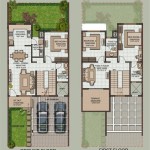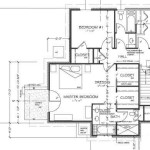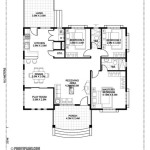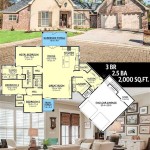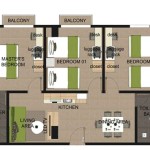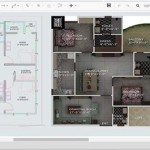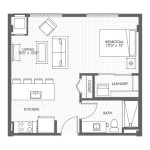Mountain Home Plans With Wrap Around Porch: Blending Rustic Charm and Functional Design
Mountain home plans with wrap-around porches represent a confluence of architectural style, practical living, and an appreciation for natural surroundings. These designs often evoke a sense of timelessness while simultaneously offering modern comforts and features. The wrap-around porch, in particular, serves as a pivotal element, extending the living space outwards and facilitating a deeper connection with the landscape.
The appeal of these homes stems from their ability to seamlessly integrate into mountainous terrain. They typically incorporate natural materials like wood and stone, reflecting the rugged beauty of their environment. The wrap-around porch, however, is more than just an aesthetic addition; it is a functional space that enhances the overall livability of the home.
Key Point 1: The Functional Advantages of a Wrap-Around Porch
The primary benefit of a wrap-around porch lies in its versatility. It provides an expansive outdoor living area that can be utilized in various ways throughout the year. During warmer months, the porch serves as an ideal space for dining, entertaining, or simply relaxing and enjoying the fresh air. The extended roofline offers shade from the sun, making the space comfortable even during the hottest parts of the day.
In colder seasons, the porch can act as a buffer zone, helping to insulate the interior of the home. It can also provide a protected area for storing firewood, outdoor equipment, or other items that need to be shielded from the elements. The ability to walk around the entire perimeter of the house under cover is particularly advantageous in regions with frequent rain or snowfall.
Furthermore, a wrap-around porch can enhance safety and security. It provides a clear line of sight around the house, allowing residents to monitor their surroundings and deter potential intruders. The porch also serves as a transitional space between the interior and exterior, which can be especially beneficial for children or pets who need a gradual adjustment to the outdoors.
Consider the impact on passive heating and cooling. A well-designed wrap-around porch can significantly reduce energy consumption by providing shade during the summer months, thereby minimizing the need for air conditioning. Conversely, in the winter, the porch can help to retain heat by creating a layer of insulation around the exterior walls.
The orientation of the porch in relation to the sun's path is crucial in maximizing these benefits. A porch that faces south will receive the most sunlight during the winter, helping to warm the interior, while a porch that faces east or west will provide shade during the hottest parts of the day in the summer.
Key Point 2: Design Elements and Material Considerations
The design of mountain home plans with wrap-around porches is often characterized by a rustic aesthetic. This typically involves the use of natural materials like timber framing, stone foundations, and exposed beams. The porch itself is often constructed with wood, although composite materials are becoming increasingly popular due to their durability and low maintenance requirements.
The style of the porch can vary widely, ranging from simple and functional to elaborate and ornate. Some designs feature intricate railings, decorative posts, and detailed trim work. Others opt for a more minimalist approach, focusing on clean lines and unadorned surfaces. The choice of style will depend on the overall architectural design of the house and the personal preferences of the homeowner.
When selecting materials for the porch, it is essential to consider the climate and environmental conditions of the area. In regions with heavy snowfall, it is important to choose materials that can withstand the weight of the snow and resist moisture damage. In areas with high humidity, it is crucial to select materials that are resistant to rot and insects.
The roofing of the porch is another important design consideration. A metal roof is a popular choice for mountain homes due to its durability, longevity, and ability to shed snow easily. However, other roofing materials, such as asphalt shingles or wood shakes, can also be used, depending on the desired aesthetic and budget.
The size and dimensions of the porch will also impact the overall design and functionality of the home. A wider porch will provide more space for outdoor furniture and activities, while a narrower porch may be more suitable for smaller properties. The height of the porch should also be considered, as it will affect the amount of headroom and the overall sense of proportion.
Key Point 3: Integrating the Porch with the Interior Living Space
One of the key design challenges in mountain home plans with wrap-around porches is seamlessly integrating the porch with the interior living space. This involves creating a smooth transition between the two areas and ensuring that they complement each other in terms of style and functionality.
Large doors and windows are often used to connect the porch and the interior. Sliding glass doors or French doors allow for easy access to the porch and provide unobstructed views of the surrounding landscape. These openings can also be strategically placed to maximize natural light and ventilation within the home.
The flooring materials used on the porch and in the adjacent interior spaces can also help to create a sense of continuity. Using similar materials or colors can visually connect the two areas and make them feel like a single unified space. For example, using wood flooring on both the porch and in the living room can create a warm and inviting atmosphere.
The furniture and decor used on the porch should also be consistent with the overall style of the home. Choosing outdoor furniture that complements the interior decor can help to create a cohesive look and feel. Adding plants, lighting, and other decorative elements can further enhance the connection between the porch and the interior.
Consider the placement of the porch in relation to the main living areas of the home. A porch that is located directly off the kitchen or dining room can be used as an extension of these spaces for outdoor dining and entertaining. A porch that is located off the living room can serve as a quiet retreat for relaxation and contemplation.
The integration of the porch with the interior living space should also take into account the privacy needs of the homeowner. Strategically placed landscaping or screens can help to create a sense of seclusion and protect the privacy of the porch from neighbors or passersby. The orientation of the porch can also be adjusted to minimize exposure to unwanted views or noise.
In conclusion, mountain home plans with wrap-around porches offer a unique blend of rustic charm, functional design, and an appreciation for the natural environment. By carefully considering the design elements, materials, and integration with the interior living space, homeowners can create a beautiful and functional home that seamlessly blends with its surroundings and enhances their quality of life. The wrap-around porch is a powerful tool that, when thoughtfully implemented, transforms a house into a home that truly connects with the mountains it inhabits.

Plan 18709ck Mountain Home With Wrap Around Outdoor Living Area Craftsman House Plans

Open Floor Plan With Wrap Around Porch Banner Elk Ii

Open Floor Plan With Wrap Around Porch Banner Elk Ii

Open Floor Plan With Wrap Around Porch Banner Elk Ii

You Had Me At Wraparound Porch Craftsman House Plans Country Style Barn

Mountain House Plan With Huge Wrap Around Porch 35544gh Architectural Designs Plans

Open Floor Plan With Wrap Around Porch Banner Elk Ii

Plan 18733ck 5 Bed Mountain Cottage On A Walkout Basement Exterior Craftsman House Plans Rustic

Plan 82740 Rustic Mountain Home With Wraparound Porch

Mountain Crest Log Home Custom Timber Homes
Related Posts

